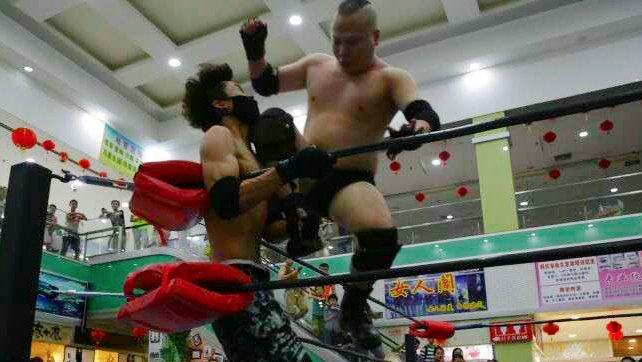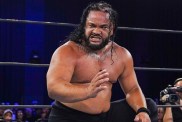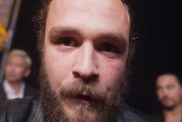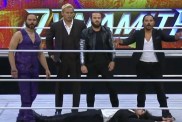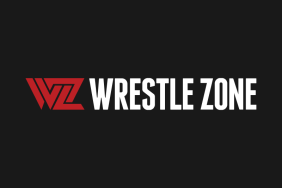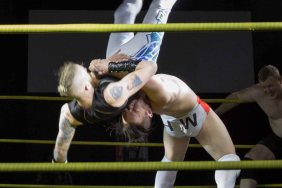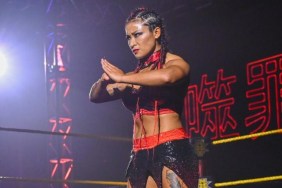This weekend marks the first time in 3 years for the WWE to hold an event on the Chinese mainland, as they get set to descend on the Mercedes Benz Arena in Shanghai. The trials that took place earlier this year were a precursor to this weekend’s action, and Chinese fans are being treated to the in-ring debut of the company’s first mainland star, Wang Bin. But amidst such activity, some of the Chinese promotions within the country’s latent wrestling scene are also attempting to make the most of WWE’s presence by generating interest for their respective businesses.
Only a handful of promotions operate on the Chinese mainland and it would be fair to say that they only operate regionally or within certain cities. Shanghai is home to the Chinese Wrestling Federation (CWF) and the Chinese incarnation of the Inoki Genome Federation (IGF), whilst Dongguan is the location of Middle Kingdom Wrestling (MKW) and Chinese Wrestling Entertainment (CWE). Only one promotion, CWF, is attempting to directly cash in on the WWE event by holding their very own event the day after WWE rolls through town. But they do so with considerable backing thanks to a close relationship with China’s number one wrestling website, Shuaijiao Wang, which directly translates as Wrestling Web.
Prior to WWE’s announcement of its deal with PPTV to broadcast Smackdown Live and RAW to Chinese viewers, Shuaijiao Wang served as an unofficial portal for everything WWE and wrestling-related, offering live streams and replays of all WWE-related programming, including Raw, Smackdown, PPVs, Network events and NXT. The website, which is still operating, also offers unfettered access to a wide range of other programming, including TNA, Lucha Underground, ROH and UFC.
Brad Guo, former COO of Shuaijiao Wang and one of the principal founders of CWF says that his promotion’s links with Shuaijiao Wang will allow Chinese fans to see the abrupt rise of Chinese wrestling, or more specifically, the CWF alliance as Guo refers to it. When asked why CWF had chosen to run an event the day after WWE, Guo said that the September 11th show was less of an event and more of an activity whereby China’s wrestling fans can experience for themselves what a Chinese wrestling event is all about.
As Guo pointed out, “We said early on that WWE and CWF aren’t competitors. Any wrestling promotion isn’t considered a competitor. Basically speaking, it’s all mutually beneficial; after all, our methods of development are different.” And while CWF’s development mode is certainly different from other Chinese promotions within the market, it is clear from CWF’s and Shuaijiao Wang’s marketing materials that WWE’s fan base is something that they are keen to take advantage of, as evidenced by photos of Guo posing alongside Triple H during his trip to China regularly appearing alongside information about CWF.
Having invited established stars to wrestle under the banner at previous events, including Japanese promotion Gatoh Move Pro’s Emi Sakura and Riho, and CWC stars Hoho Lun and Jason Lee, it’s clear that CWF is trying to present itself as the premier Chinese promotion. For this reason, CWF has invested heavily in branding and in its facilities, opening its own training center where fairly slick looking promotional videos are shot showcasing the organization’s wrestlers. In this respect, CWF is ahead of other Chinese promotions. But they are also the only Chinese promotion to enter the tricky waters of charging people to watch the product on the mainland.
The cheapest tickets for the post-WWE CWF show are available for around 15-30 dollars, though fans also have the opportunity to purchase a ticket for 135 dollars which allows them some element of creative control during the evening’s performance; a move which could be considered innovative but might also confuse Chinese fans who may be coming into contact with professional wrestling for the first time. When Gabe Sapolsky brought WNN to China in 2014, many spectators in attendance were unsure whether what they were watching was real or not. Allowing fans to pay for creative control is likely to further add to any such confusion. But this may be why CWF has previously published posts via Chinese social media platforms following past events, breaking down individual matches, highlighting specific mistakes and exposing kayfabe; a move that others within China’s wrestling circle have questioned when it comes to promoting pro-wrestling within a market that has had very little exposure to it.
Elsewhere, IGF China, which peculiarly operates in China under the English name International Glory Fighting, opened its doors to China’s budding wrestlers and mixed martial artists in August with an exhibition event designed to popularize the IGF name amongst Chinese fans and raise awareness of the sport of pro-wrestling. Of course, the event was also a perfect advertisement for the IGF training center. Having attracted a number of WWE tryouts to their new training location in the Shanghai suburb of Jiading district, students have been able to train under the tutelage of former WWE star Kenzo Suzuki. But at present, IGF China’s goal is to attract people who want to train, and much like CWF, they have been leveraging WWE’s name in order to do so.
Wang Bin’s image was ever-present during the opening ceremony of the IGF training center and his promo videos were played relentlessly, as guests, partners, local officials and prospective trainees were sold the vision of becoming an international Chinese superstar via IGF’s training facilities. According to Wang Jianxin, the individual responsible for running IGF’s training center in China, the goal is to have trainees eventually wrestle under the IGF banner and they have already taken standout pupils to Tokyo to observe an IGF event up close.
China’s other promotions are taking a more measured approach in terms of getting their name out to the public, pursuing markedly different routes from CWF and IGF. MKW, run by American promoter Adrian Gomez, has chosen not to run events prior to or after the WWE Shanghai show. Gomez pointed out, “I’m not running (a show) because typically, promoters run their pro wrestling events a day or two before the WWE event, not the day right after, so as not to appear too amateur. We can’t compete with WWE on that front and we would rather just watch the WWE event and learn from it.”
Instead, Gomez, who has a close working relationship with a number of promotions around Asia, intends to help build MKW’s presence by cooperating with foreign promotions and taking his wrestlers, both Chinese and non-Chinese, outside of China to represent the MKW brand abroad. Gomez noted that he plans to spend his time and money preparing for Thailand’s Wrestlestar 3 event and the China Wrestle Festival in April 2017, adding, “We aren’t in a hurry to compete with WWE directly.”
However, the most interesting case of domestic promotion at present lies in what the CWE is doing. Founded and run by The Slam, a Chinese wrestler who trained in South Korea, CWE recently held what was possibly China’s biggest ever show, in terms of attendance, organized by a domestic company. The Slam’s secret to drawing the crowds was right out of Eric Bischoff’s playbook as CWE held the event for free in the middle of a shopping mall in the city of Dongguan.
As The Slam explained, “Because wrestling isn’t popular here like it is in the States, the stage we are at now is a popularizing stage. First, let the ordinary people get a good feeling from seeing wrestling. But in order to give them this feeling, I don’t mean via TV or internet ads for 10 seconds. I mean wrestling in front of their faces; letting them know what wrestling really is. The shopping mall was the best place to do this because it’s a wide open space, full of everyday people passing the time. They can take out their phones, take pictures, share them online and let others know.”
And it’s safe to say that hundreds of photos were taken during China’s first ever wrestling event to take place in a shopping mall, not least because The Slam featured in a hardcore match, which at one point also included a flaming table. Whether the event, which was filmed using a VR camera setup, helped generate many fans for CWE is debatable, but it certainly got people watching.
